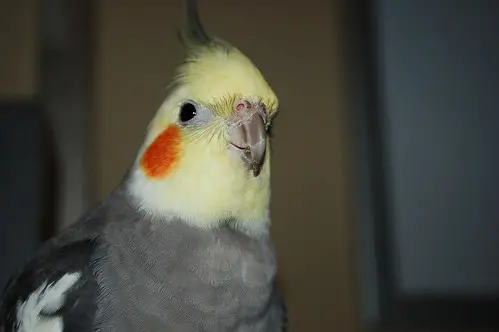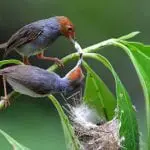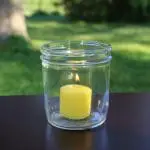Cockatiels are common household pet birds with friendly, chatty personalities. But these types of birds also experience night frights or extreme night terrors. Cockatiels are sensitive to unexpected noises and shadows. One of the signs that your parrot is afraid of is if it makes distressed sounds. Also, frightened birds may flap around the cage in an uncontrolled way.
For cockatiels with night frights, it’s essential to make their surroundings, most especially their sleeping environment peaceful, avoiding loud noises that may trigger manifestations. Make sure to contact your vet so that you’ll be aware of the underlying physical causes of why your bird is acting that way.
In this post, you’ll learn about some helpful ways to avoid cockatiel night frights, so you’ll know what to do it happens to your pet.
How to Respond to Your Frienghtened Cockatiel
1. Approach Your Bird Calmly
Turn on the light. Wait until your cockatiel is calm. After a night fright, cockatiels might be seen curled up in a bird cage’s corner with a standing crest. It might shake its head repetitively or hiss loudly. Grabbing your pet before it is fully calm may put you and the bird at risk of injuries. Also, it will scare the parrot even more.
A frightened bird should be allowed to exhibit these manifestations than restricting them to release stress and anxiety. A scared cockatiel might also attempt to bite you. You’ll know if the parrot is calm if it already shows smooth and even breathing. A calm cockatiel also sits still and won’t jerk around or shake its body.

2. Don’t Shout
Always stay calm at all times when you see your bird showing signs of night frights. As you approach your bird, make it low, and avoid shouting. Calling your parrot’s name or repeating the same wors, like “relax,” may soothe and calm your birds.
3. Assess for Injuries
Assess your parrot for possible physical injuries, such as scratches, plucking, or bleeding. After calming the bird down, assess its condition from his head to his claws.
Here’s how you should perform a physical assessment for a parrot that exhibited night fright:
- Check the eyes of your bird because the eyes are prone to injury during the night.
- Check the feathers for any blood or if the feathers of your parrot are misshapen.
- Assess the feet of your bird if they have been damaged or scraped.
- Check the beak of your pet. Make sure that the beak is intact.
4. Treat Injuries Right Away
If you assessed any injury, it’s important to treat them immediately.
Here’s how:
- Gently run your hands over the feathers until they are lying flat.
- Stop the blood flow to injured areas, holding your cockatiel gently and pressing the injury down with your finger for about one to two minutes.
- For injured or bleeding eyes, take your cockatiel to the veterinarian immediately for prompt intervention. Any form of bleeding that won’t stop should be checked by a vet because death can result from blood loss.
How to Create a Calm and Safe Environment for Cockatiels

1. Transfer Your Cockatiel to a Smaller Cage
Your pet bird can play into a larger cage during the day. However, during the night, it is best to transfer your cockatiel into a smaller to avoid night frights. Buy or create a smaller cage that measures 24 x 24 x 24 inches in size.
Birds tend to appear calmer in a smaller cage when left alone at night. Make sure to place a single perch, water bowl, and food inside the smaller cage. Make the cage safer at night by lining the bottom part with towels. The soft fabric of towels would cushion your bird when landing or falling into the ground if it got scared at night.
2. Don’t Put Toys Inside the Small Cage
Never put any toys inside your cockatiel’s smaller cage because these items could cause potential harm to your parrot during a night fright. Your pet could accidentally scratch his feather with a sharp toy or the edge of the perch.
3. Cover the Cage
Get a breathable fabric and cover your bird’s cage every night to avoid scaring them at night. Some cockatiels find it very soothing. Use a loose sheet and make sure that it still allows proper airflow in the cage. Don’t use vinyl because it can totally block the air from your bird’s cage. If ever your parrot attempts to pull the cloth through, remove the covering so as not to injure the beak of your bird.
4. Close All Curtains
Sheer curtains may create shadows inside the room. It may cause night frights among your cockatiels. That’s why you have to close the curtains in the room every night. It helps to choose thicker curtains inside the cage room. Also, you can adjust the curtains, covering the entire window, and creating a more soothing and less frightening environment for your pet. Don’t make the room too dark. Otherwise, the parrot will just feel more anxious.
5. Provide Lighting
It’ not good to leave your cockatiel in a completely dark room. It helps to plug in a nightlight for a little light. Cockatiels tend to be scared of in a too dark room, so counter such feeling by placing one to two nightlights into the cage room.
When installing these lights, position them far enough, a distant farther from the cage. In this way, your pet won’t be able to pull them and injure himself. Testing different lights are important to find the best ambiance for your cockatiels.
6. Reduce Bird Anxiety
You can help reduce the anxiety of your bird at night by keeping other pets out of the cage room, like cats and dogs. Birds, most especially cockatiels, are afraid of unusual noises made by other pets. Avoid disturbing your bird by keeping them out. Remember that rodents can also be a source of night frights among cockatiels. That’s why you have to seek the help of an exterminator to get rid of them.
7. Maintain a Consistent Environment
Birds are very consistent, and any changes in the environment may cause anxiety. That’s why reversing or minimizing any recent room changes should be done. For instance, a new art painting hanging on the wall can be a source of stress for cockatiels. It’s also the same with a light fixture or a ceiling fan. Shiny or bright fixtures in the cage room should be eliminated to avoid night frights.
8. Install a Video Baby Monitor
Installing a baby monitor in the cage room can help you monitor your bird. With a video monitor, you’ll be able to watch if your cockatiel starts to get anxious so you can intervene before the signs become too bad.
How to Address Underlying Health Issues
It’s always advisable to bring your cockatiel to a veterinarian with recurring night frights. The vet will be checking any physical causes or underlying factors that cause night frights. Annual physical examination is also important with or without night frights to prevent such occurrence.
Make sure to follow the veterinarian’s advice, such as strict compliance with medications and vitamins or other supplements. For instance, you can lower the anxiety level of your bird with calcium supplementation.
Conclusion
Night frights can be hurting to your bird. It could result in physical injuries, such as bleeding and beak breakage. That’s why it’s crucial to find ways to avoid night frights by covering the cage of your cockatiels with a breathable fabric, monitoring your bird by installing a baby monitor, and taking your bird to the vet for recurring night frights. Make your cockatiels happy and healthy by avoiding night frights, keeping them safe and secure.


